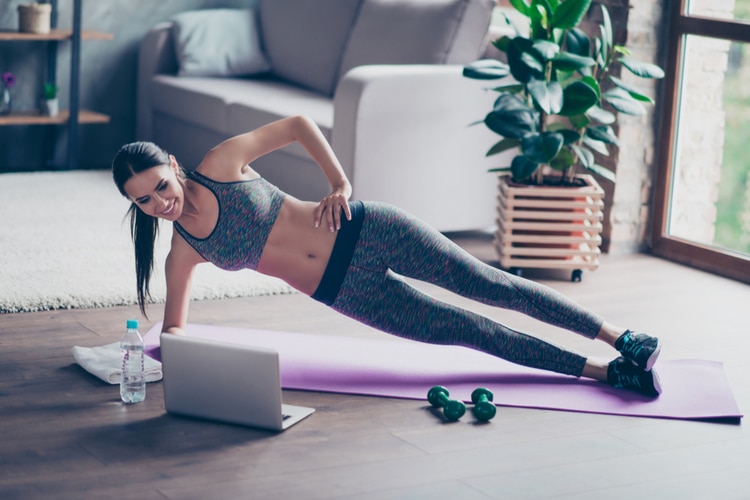
The pandemic has encouraged many people to shift a greater portion of their lives into their homes as well as the virtual realm. But while working from home and online shopping are a convenient way to stay safe, they also get in the way of those wanting to pursue a more active lifestyle.
Adding a further complication to the mix, gyms aren’t exactly the safest place to hang out right now. Thus, our homes have become impromptu offices as well as fitness centers. And this can put us at greater risk for injury.
The basic setup
Weekend warriors or those who play a lot of contact sports know they need to gear up. They wear a mouth guard and knee pads to match the intensity of an activity.
But the home environment feels safe. An average person who starts following a DIY exercise program, or one they found on the internet, might not feel any need to take precautions.
This poses a problem for two reasons. One is that most homes weren’t designed with a high level of physical activity in mind. Some types of flooring might not offer enough traction, for instance. Or they might not be able to handle the load as you move around carrying weights.
The second problem is that people become more prone to accidents as they tire. And if you’re not yet accustomed to exercise, you can underestimate this effect.
Slips, trips, and falls are common among the elderly, who tend to have compromised mobility. But studies have shown that even young and healthy individuals suffer a higher risk of such accidents when they are fatigued.
Clear the floor around your designated workout space. Going barefoot gives you added sensory feedback and traction, but you lose protection, which could be relevant if you accidentally drop something. Comfortable indoor trainers should be your go-to option for most home workouts.
Advancing with caution, part one
Our bodies eventually acclimate to increased physical activity. This results in the phenomenon of diminishing returns.
If you follow the same workout routine for a couple of weeks, you can easily notice weight loss, for instance. But after a couple of months with no variation, you won’t see that much of an improvement.
When people encounter this problem, they often decide that it’s time to step up their efforts. That can be great if you’re at the gym, with the proper equipment and the supervision of a professional trainer.
It’s less than ideal for those who are working out on their own. And again, this problem manifests in two ways. The first is on the equipment side of things.
It’s been well-reported during the pandemic that dumbbells are out of stock. This is due to a mix of increased demand and supply chain issues. And as gyms remain closed, people are more likely to improvise. But not every heavy item you find lying around the house has a good grip.
The same thing goes for plyometric boxes. You can find DIY guides for those online. But what are the odds that the materials used, along with your own construction skills, will hold up to your weight and the force you apply during box jumps?
The solution? Stick to professionally made equipment as much as possible. Or find equipment-independent ways to increase the difficulty of your exercises through manipulating levers, balance, tempo, or rep patterns.
Advancing with caution, part two
The second potential risk lies in the lack of supervision. When you train in the gym, someone’s there to observe you. They know what good form looks like, and can alert you to mistakes.
Ideally, for any given exercise, there are multiple muscle groups that should be engaged in its execution. They distribute the load, allowing your body to transmit force in a balanced and sustainable way.
People who self-train are prone to errors in the form. Lacking professional guidance, they often allow their bodies to over-compensate for difficulty. Some muscles are stronger than others and consequently, bear too much load. This heightens the risk of injury.
You can begin to correct these errors by practicing the skill of listening to your body. Or you can install a body-length mirror in your exercise area, or try recording yourself on video so that you can review your form afterward.
Not everyone has the available space or resources to accommodate an extensive home renovation and build their own fitness center. But you don’t need one in order to exercise safely. These simple precautions will allow you to work out at home and progress in difficulty without risking your body.

